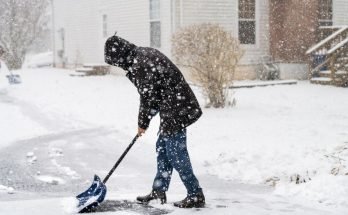Your sewer line is part of the piping system designed to take waste water and debris out of your home to either your septic tank or the main sewer lines that connect to your municipal sewer services.
If you have a blockage in the system, there can be a huge mess with an expensive cleanup and repair bill. While you may not know what’s happening under the ground, there are signs to look out for.
Remember, sewer line backups are pretty common, which doesn’t necessarily mean an expensive repair bill. Once fixed, you can be more diligent with what you flush down the toilet or wash down the drains so a blockage doesn’t build up again. The better you treat your sewer lines, the better they keep your waste flowing.
Here is how to tell if your sewer line is backed up.
Bubbling And Gurgling
Your toilet piping runs into the main line and out of your house. All toilets in the house do this, as well as drains from your washing machine, showers, tubs and sinks. If it makes a gurgling sound, you have a backup when you flush the toilet or run the water.
Try flushing each toilet to see if the same problem occurs. If only one toilet is percolating, then the blockage will be in that smaller drain line, and you can use a plunger or plumber’s snake to try and clear the obstruction. If all toilets do this, then your backup is likely in their main line. You may need to call a professional plumber to clear the pipes.
Foul Smell
The contents of your wastewater have an unmistakable, foul odour, and you know it when you smell it. The system can wash away the waste through the pipes and outside of the home.
If there is a blockage in the line, the wastewater gets trapped and releases a foul gas. Your pipes are full of bacteria; this smell is unpleasant and can also be toxic to breathe.
Drainage Is Slow
You will be able to see this problem easily, and it is usually a progressive issue that gets worse over time but may also happen abruptly. A slow drain can be in the toilet, in the tub, shower or sink, and it is something you need to correct because it’s not going away on its own.
Check each toilet or drain to see if it is an isolated problem or the whole drain system. If only one drain is affected, that is where the blockage is. If all the drains are slow, your main line is blocked.
Wet Floor Around The Drains
There are usually floor drains in basements or in your laundry room to allow any water that is leaked onto the floor to flow out of the house. When there is a mainline blockage, this is the first place the water will back up and overflow.
Look for wet spots around the drains that are not the result of a spill, water tank or washing machine overflow. This is a warning sign that a blockage is happening, but there may still be some wastewater flow. Before it worsens and floods the whole area or overflows the toilet, get a plumber to assess and clear it.
Large Trees Around Sewer Lines
Trees can have as much growth below the ground as they do above it, and these roots push their way through the earth, sometimes breaking through your sewer lines. Once they grow inside or across a pipe, debris like toilet paper builds up on the roots and eventually clogs the pipe completely.
If you have checked everything else and can’t nail down the cause of your sewer backup, those tree roots might be the culprit.
Frequent Need To Plunge Toilets
We have all done it. Sometimes the toilet contents are too much for one flush, and it gets a blockage that needs to be plunged. While this doesn’t happen too often, you may notice it starting to be a regular occurrence.
Blockages can develop over time, and as the sewer drain gets narrower at certain points, it is easier to develop a clog that requires a plunger.
Natural Events
Your sewer line can get damaged from occurrences beyond your control besides tree roots. Flooding, freezing, snow and ice melt, earthquakes and even nearby excavating can disturb the ground around the main pipes and crack or rupture them. Pay attention to how your drains are affected during these types of events.
If you get a sewer line backing up and can’t clear it yourself, call for professional help. A qualified plumber will inspect where the blockage is occurring, and they have the knowledge, tools and manpower to get the job done right.




